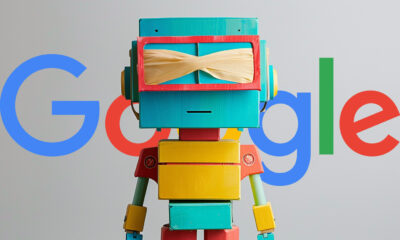SOCIAL
A Mass-Reach Medium With Meaning

Conal Byrne, CEO iHeartMedia Digital Audio Group.
Any emerging medium starts out with a superfandom of early adopters who jump in first because they feel part of an early-day tribalism around that content type and the creators driving it. As mediums grow, if they survive across the first 5, 10 or 15 years of their life cycle, those superfans become, more simply, just fans. And, if that medium is truly fortunate, those fans then become a mass-reach audience.
Podcasting is now a mass-reach medium, and as such, it is proving to be unique. As the medium continues to grow—now reaching 120 million Americans a month and, perhaps even more compellingly, 89 million Americans a week—the more notable statistic is that individual engagement around the medium has doubled over the last five years from about a half an hour a day to almost an hour a day for weekly listeners. The fastest growing kind of podcast listener is a daily listener, with that cohort alone up 20% year over year. As the overall audience grows, individual engagement is growing, too; that’s rare. As the medium has become mass reach, its listeners are engaging more—not less.
These engagement stats extend into marketing effectiveness as well because marketers are actually seeing podcast mass-reach audiences behave like early adopter superfan audiences. For example, 75% of listeners trust podcast hosts more than social media; 65% of podcast listeners pay attention to podcast ads (compared to 39% on TV). As a result, 60% of podcast listeners have bought something because they heard about it in a podcast.
A Shifting Trend For Mediums
With this much engagement and trust, how is podcast listening affecting other mediums and content types? Because a listener trusts podcasters more than other mediums, does it mean that the listener is consuming those other content types less, or at least differently? When it comes to where this upward trend in podcast listening is pulling from, what are people doing less of?
Most would think that podcasts probably pulled primarily from other audio types. The statistics and facts bear out a very different truth: 70% are spending less time on social media platforms such as Facebook, TikTok and Instagram; 50% of podcast listeners are watching fewer YouTube videos to listen to podcasts; 46% of podcast listeners are spending less time streaming music, followed by activities such as streaming video and watching movies and so on. With these figures in mind, it shouldn’t surprise us that video-centric platforms are building podcast strategies, presumably to retain this audience and engagement. (We already see YouTube moving in this direction.)
Three Considerations For Starting A Great Podcast
With the growing trend of podcasting, it’s not surprising that companies across each and every industry are getting involved in the platform. When considering a podcast for your business, here are a few of the most important things to consider.
Cover a topic you’d be talking about “even if the microphone was broken.”
There’s no need to dig too deep for a podcast idea. The best shows are often born out of a passion shared by the host and their audience, establishing the type of authentic connection that makes podcasting unique. Any subject you can talk about endlessly is a great place to start, as listeners appreciate the credibility that comes from a host who understands the intricacies of a topic.
Keep it up weekly and year-round.
Conversation is an art form that can be learned. Going back and listening to the first episode of a hit podcast can feel shocking. The hosts sound different, a bit awkward even and nothing feels polished. When diving into podcasting, it’s important to remember that no one starts out as an expert. Hosts hone their craft the more episodes they record, the more guests they talk to and the more thought they put into their topics.
Listen to others.
Learn from others, but don’t imitate. Authenticity rules. Each host brings their perspective and personality to their show, and by crowdsourcing ideas and techniques from other shows, hosts can refine their own style and create an authentic identity. But avoiding direct imitation helps maintain originality, foster creativity and establish a distinct connection with the audience. This will help a host stand out in a crowded podcasting landscape and offer something truly unique and valuable to their listeners.
Conclusion
As a medium that is not platform-specific but rather publisher-centric, podcasting is a content type where creators have the first and last word, where they’re able to tell the story and have the conversation exactly as it should be—exactly as they see fit. In this light, it’s fascinating that podcasting is pulling from mediums where the content is often reverse-engineered from algorithms and discovery engines. (Specifically interesting here is the notion that podcasting is not yet a platform-optimized content type like SEO content on the internet more broadly is.) Is this a migration back toward longer-form, more creator-centric content?
At its best, a podcast is the human voice simply telling a great, authentic story—or having a thoughtful, engaging conversation—unchanged by platform specs or algorithmic demands, as it was meant to be. Is the rising demand for such a thing indicative of a larger shift in audience appetites? I believe that, yes, it is, and that such a shift might perhaps be good.
Forbes Technology Council is an invitation-only community for world-class CIOs, CTOs and technology executives. Do I qualify?
SOCIAL
Snapchat Explores New Messaging Retention Feature: A Game-Changer or Risky Move?

In a recent announcement, Snapchat revealed a groundbreaking update that challenges its traditional design ethos. The platform is experimenting with an option that allows users to defy the 24-hour auto-delete rule, a feature synonymous with Snapchat’s ephemeral messaging model.
The proposed change aims to introduce a “Never delete” option in messaging retention settings, aligning Snapchat more closely with conventional messaging apps. While this move may blur Snapchat’s distinctive selling point, Snap appears convinced of its necessity.
According to Snap, the decision stems from user feedback and a commitment to innovation based on user needs. The company aims to provide greater flexibility and control over conversations, catering to the preferences of its community.
Currently undergoing trials in select markets, the new feature empowers users to adjust retention settings on a conversation-by-conversation basis. Flexibility remains paramount, with participants able to modify settings within chats and receive in-chat notifications to ensure transparency.
Snapchat underscores that the default auto-delete feature will persist, reinforcing its design philosophy centered on ephemerality. However, with the app gaining traction as a primary messaging platform, the option offers users a means to preserve longer chat histories.
The update marks a pivotal moment for Snapchat, renowned for its disappearing message premise, especially popular among younger demographics. Retaining this focus has been pivotal to Snapchat’s identity, but the shift suggests a broader strategy aimed at diversifying its user base.
This strategy may appeal particularly to older demographics, potentially extending Snapchat’s relevance as users age. By emulating features of conventional messaging platforms, Snapchat seeks to enhance its appeal and broaden its reach.
Yet, the introduction of message retention poses questions about Snapchat’s uniqueness. While addressing user demands, the risk of diluting Snapchat’s distinctiveness looms large.
As Snapchat ventures into uncharted territory, the outcome of this experiment remains uncertain. Will message retention propel Snapchat to new heights, or will it compromise the platform’s uniqueness?
Only time will tell.
SOCIAL
Catering to specific audience boosts your business, says accountant turned coach

While it is tempting to try to appeal to a broad audience, the founder of alcohol-free coaching service Just the Tonic, Sandra Parker, believes the best thing you can do for your business is focus on your niche. Here’s how she did just that.
When running a business, reaching out to as many clients as possible can be tempting. But it also risks making your marketing “too generic,” warns Sandra Parker, the founder of Just The Tonic Coaching.
“From the very start of my business, I knew exactly who I could help and who I couldn’t,” Parker told My Biggest Lessons.
Parker struggled with alcohol dependence as a young professional. Today, her business targets high-achieving individuals who face challenges similar to those she had early in her career.
“I understand their frustrations, I understand their fears, and I understand their coping mechanisms and the stories they’re telling themselves,” Parker said. “Because of that, I’m able to market very effectively, to speak in a language that they understand, and am able to reach them.”Â
“I believe that it’s really important that you know exactly who your customer or your client is, and you target them, and you resist the temptation to make your marketing too generic to try and reach everyone,” she explained.
“If you speak specifically to your target clients, you will reach them, and I believe that’s the way that you’re going to be more successful.
Watch the video for more of Sandra Parker’s biggest lessons.
SOCIAL
Instagram Tests Live-Stream Games to Enhance Engagement

Instagram’s testing out some new options to help spice up your live-streams in the app, with some live broadcasters now able to select a game that they can play with viewers in-stream.
As you can see in these example screens, posted by Ahmed Ghanem, some creators now have the option to play either “This or That”, a question and answer prompt that you can share with your viewers, or “Trivia”, to generate more engagement within your IG live-streams.
That could be a simple way to spark more conversation and interaction, which could then lead into further engagement opportunities from your live audience.
Meta’s been exploring more ways to make live-streaming a bigger consideration for IG creators, with a view to live-streams potentially catching on with more users.
That includes the gradual expansion of its “Stars” live-stream donation program, giving more creators in more regions a means to accept donations from live-stream viewers, while back in December, Instagram also added some new options to make it easier to go live using third-party tools via desktop PCs.
Live streaming has been a major shift in China, where shopping live-streams, in particular, have led to massive opportunities for streaming platforms. They haven’t caught on in the same way in Western regions, but as TikTok and YouTube look to push live-stream adoption, there is still a chance that they will become a much bigger element in future.
Which is why IG is also trying to stay in touch, and add more ways for its creators to engage via streams. Live-stream games is another element within this, which could make this a better community-building, and potentially sales-driving option.
We’ve asked Instagram for more information on this test, and we’ll update this post if/when we hear back.
-

 PPC5 days ago
PPC5 days ago10 Most Effective Franchise Marketing Strategies
-

 SEARCHENGINES6 days ago
SEARCHENGINES6 days agoGoogle Needs Very Few Links To Rank Pages; Links Are Less Important
-

 MARKETING6 days ago
MARKETING6 days agoHow to Use AI For a More Effective Social Media Strategy, According to Ross Simmonds
-

 SEO6 days ago
SEO6 days agoHow to Become an SEO Lead (10 Tips That Advanced My Career)
-

 PPC6 days ago
PPC6 days agoBiggest Trends, Challenges, & Strategies for Success
-

 SEARCHENGINES4 days ago
SEARCHENGINES4 days agoGoogle Won’t Change The 301 Signals For Ranking & SEO
-

 SEARCHENGINES5 days ago
SEARCHENGINES5 days agoGoogle Again Says Ignore Link Spam Especially To 404 Pages
-

 SEO3 days ago
SEO3 days agobrightonSEO Live Blog













